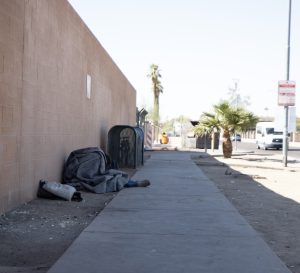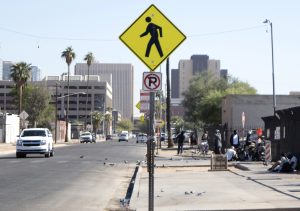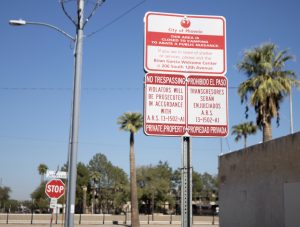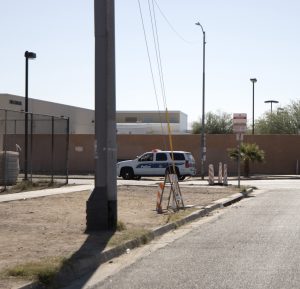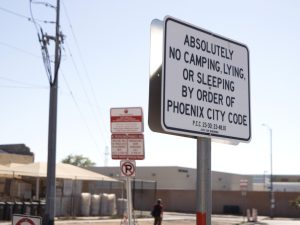- Slug: BC-CNS-The End of The Zone. 600 words.
- Photos, video story available.
By Jacob Snelgrove
Cronkite News
PHOENIX – The city of Phoenix has met a court-ordered Nov. 4 deadline to remove all tents and makeshift structures from the area around the Human Services Campus known as “The Zone,” and business owners in the area are hopeful.
The Zone was a sprawling encampment of over 1,000 people experiencing homelessness near downtown Phoenix, just blocks from the state Capitol.
“I think people realized now that this is a public nuisance situation and an epidemic,” said Joseph Faillace, co-owner of the Old Station Sub Shop at 1301 W. Jefferson St., about a block away from the Human Services Campus. “These people need help. Some of them have mental illness, a lot of people are on drugs and alcohol. It just needs to be addressed. People can’t just let it go under the radar and expect it to get better because it’s not going to get better. You can’t enable people.”
Though Faillace was excited for change, he said the area still looked beat up and pointed out there were feces and debris near his restaurant.
In response to a lawsuit filed by property owners, residents and business owners in the area, including Falliace, Maricopa County Superior Court Judge Scott Blaney ruled Sept. 20 that the city needed to clear out the encampment.
The city said it has been working to address the area one block at a time since May and has been conducting outreach, cleaning up the area and closing blocks to camping.
“Though our city staff and local non-profits made heroic push over the last few months to conduct outreach to our unsheltered neighbors, move them indoors, and ultimately clear this area, I want to emphasize that today does not mark the end of our work to address the nationwide homelessness crisis,” Phoenix Mayor Kate Gallego said in a statement Monday.
Throughout the process of moving people out of The Zone, every person city staff talked to was offered a spot at an indoor shelter – 718 people were offered services, and 585 accepted placement at an indoor shelter, according to the city.
With help from partners, the city also added 362 transitional beds for people experiencing homelessness in October.
“After months of concentrated efforts, we reached an important milestone that will help move us towards our goal of ending all homelessness in our community. We’ve dedicated historic amounts of funding and deployed innovative solutions to provide folks with shelter and wraparound services – but we can, must, and will do more,” Gallego said.
In the past, Faillace has come in to open his sandwich shop and was greeted by broken windows and people sleeping on his outdoor tables or in front of the door. He resorted to putting up a metal fence around his business to keep people out.
“About six or seven years ago, a lot of people started to get into the area. They felt the action would start coming this way. The pandemic stopped that, and then the homeless encampments wiped out any kind of interest in businesses,” Faillace said.
The city plans to continue working with the Office of Health Solutions to keep the area clean. If individuals are found camping in the closed areas, the city will make an effort to engage them and offer alternative locations.
“I’m really happy that these people are going to get some help. I’m happy to see the city has gotten involved,” Faillace said. “These people can’t be out here like this – living like this in the heat. They’re dying in those tents. … Nobody can live in that. I think only positive things will come out of this.”
For more stories from Cronkite News, visit cronkitenews.azpbs.org.
